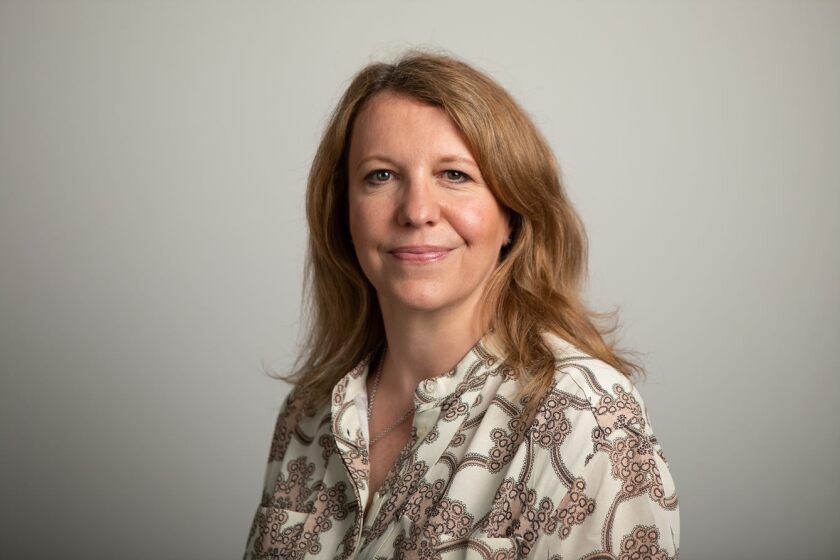After Interxion was acquired by Digital Realty for US$8.4 billion in 2020, it became Europe’s largest colocation company – with a claim to being the largest in the world.
The wider company counts more than 290 data centres across 26 countries as part of its global footprint, with plans to expand even further.
If you had asked Caroline Puygrenier, director of strategy and business at Interxion, what the company’s future plans entailed prior to the acquisition two years ago, she would have responded by saying:
“Our strategy is to expand in the locations where we’re already at – that’s Frankfurt, London, Amsterdam and Paris.”
Although the firm now refers to itself as “a Digital Realty company”, as part of a wider group, Interxion’s strategy has pivoted somewhat in the last few years.
At the time of the acquisition, the combining company said it planned to expand Interxion’s communities of interest in Europe by extending it across a global footprint.
“Now, we’re looking to expand in most regions around the world,” says Puygrenier.
She points to Interxion’s foray into Africa as an example. The company had announced it would take a controlling interest in Kenyan data centre operator Icolo, even before the Digital Realty deal was confirmed.
But last year, Interxion built up its African portfolio further by taking a controlling stake in Medallion Communications, a leading carrier-neutral data centre operator in Nigeria.
This will be strengthened further by Digital Realty’s acquisition of a majority stake in Teraco, for around $3.5 billion.
“It’s all about enabling the next billion people to access the internet and applications that you and I have access to already,” says Puygrenier.
Closing the digital divide in locations such as Africa is important to Puygrenier, and the recent data centre boom in the country will help improve conditions for millions on the continent.
The African data centre market is expected to grow massively in the next few years. It accounted for less than 1% of global colocation data centre supply in 2021, but this is forecast to grow by around 25% by 2023, according to advisory and research firm Xalam Analytics.
The market will be led by Digital Realty-owned Teraco upon the completion of that deal, but there are several other major players planning projects in the region, including Dimension Data, MTN Business and Raxio Group.
Alongside its rapidly growing centre market, Africa has become one of the most important growth markets for submarine cables, with companies like Google introducing widescale projects such as the Equiano cable, which connects Portugal and South Africa.
TeleGeography’s Africa Telecommunications Map 2022 includes 71 cables connected to the continent that are either active or in construction. The map also features details on used bandwidth, internet capacity, pricing trends and content provider investment, as well as broadband and mobile penetration rates for each country.
Puygrenier says that the subsea projects “coincide” with the data centres popping up around the continent, adding that it is “perfect timing” for both to work hand in hand.
But the plans do not end with M&A activity in Africa, Puygrenier says the company intends to enter India and the Middle East too, while also expanding in Latin America.
Reducing emissions
As the industry continues to gather pace, what is key for data centres going forward is to keep them as sustainable as possible.
Data centres consume a large amount of energy – some 2% of the world’s energy consumption, according to some estimates – and attention has turned to how to conserve it in a way that will benefit the environment.
With several firms committing to net-zero emissions by 2050, Interxion is pushing its own initiatives to tackle rising emissions.
This has seen the company source 100% of energy from renewables for its Europe and US colocation business.
The firm also executed the first data centre industry green bond, issuing $6 billion in green bonds since 2015.
At Datacloud Global Congress in Monaco earlier this year, Puygrenier suggested that one way the industry as a whole could reduce emissions is by replacing small, inefficient data centres operated in-house by enterprises.
“It’s not their core business,” she said.
“There’s a trend to help those enterprises move to a greener way of working.”
Puygrenier believes that enterprises that do not view data centres as their core business may lack the latest technology, given that it is an expensive thing for companies to maintain.
“They might not have the time, energy or skills to have the relevant protocols put in place,” she says.
“So, we’re working closely with enterprises to help move parts of their data centres to the cloud and the rest of the parts to our data centres, which are working on being more sustainable.”
In addition, Puygrenier believes specialised firms have more control of power consumption and where that power comes from.
She points to the River Cooling technology that Interxion developed, launched in 2021, which uses water from an old industrial facility to cool its data centres at its campus in Marseille.
The €15 million cooling solution is “30 times” more energy efficient than traditional cooling systems and produces 22MW of renewable energy annually while mitigating the emission of 795 tons of CO2, according to Interxion’s website.
“It’s being cooled by an underground river, so instead of using a generator and power we are using the water underground, and that is also happening in our Cloud House facility in London,” adds Puygrenier.
Facilities in Texas and New Mexico rely heavily on solar and wind power and Puygrenier says the company ensures that it is using renewable energy where possible.
Lacking diversity
The last time Puygrenier spoke with Capacity, she lamented the notable lack of diversity in telecoms. Fast forward a few years, and she thinks that while some progress has been made, there is still some way to go for the sector to become more diverse and inclusive.
“There are groups that have popped up, like Women in Tech, but it will take a while to filter through,” she says.
Puygrenier feels that a key issue moving forward for the industry as a whole will be how it can attract younger talent, noting that there are several groups that aren’t well represented in telecoms.
“The problem is we are competing with the likes of Google and Amazon, who come across as funky and exciting to youngsters,” she says.
“We need to find a way to make the data centre industry and telecoms more interesting.”
Puygrenier herself has been in telecoms for more than 25 years and the data centre industry for just over six.
She believes that while the telecoms landscape can, at times, be seen as complicated, helping people to understand its importance would go a long way in attracting new talent.
“Streaming, gaming and other applications that are coming in the future, like artificial intelligence and virtual reality – telecoms supports it all,” she says.
A rapid evolution
Historically, and certainly in the time that Puygrenier has been in the industry, the telecoms industry has developed rapidly.
The speed at which it has evolved can be put down to the “insatiable need for faster information”, she says. “People will not accept the ‘buffer wheel of death’ that we used to see over 10 years ago.”
Faster communication has essentially paved the way for technology to develop at an increased pace and Puygrenier believes telecoms will continue to evolve – but what is one subsector in telecoms to look out for going forward?
“I’m sure you’ve heard of the metaverse, if you haven’t you’ve clearly been hiding,” she laughs.
While definitions of the metaverse may differ, it is generally accepted as a virtual reality, characterised by persistent virtual worlds that continue to exist even when users aren’t present. It is an augmented reality that combines aspects of the digital and physical worlds.
At Mobile World Congress earlier this year, Puygrenier saw a use case delivered by Barcelona FC where people from around the world were able to attend football matches virtually.
Club president Joan Laporta, during his keynote speech at the event, said that the metaverse will be used as a strategy to attract new supporters. This is just one of many large enterprises looking to capitalise on the potential of the metaverse.
“That is going to be something to watch for in the near future,” says Puygrenier.
Importantly, to underpin the future of the metaverse, data centres will need to find ways to support that level of information to create immersive experiences.
“Do we need to be close to the edge – closer to the end user – to improve the user experience and to avoid buffering?” she asks.
Puygrenier says that Interxion must identify who the main players are and work with them to understand what needs to be done to enable an immersive experience from home.
“There’s a lot of work that needs to be done to enable that,” she says.









